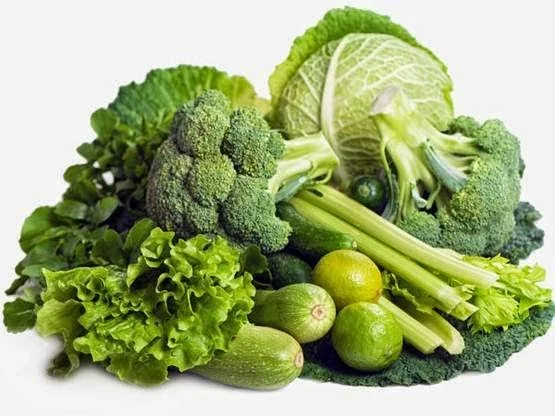Multiple sclerosis is a disease of the central nervous system (brain and nerve tissue behind the bone marrow) as a result of damage to myelin. Myelin is a material that protects nerves, serves as a protective coating on electrical wires and makes it easy to send nerve impulses quickly. Speed and efficiency of delivery impulses is what allows a smooth body movements, rapid, coordinated and carried out only with a little effort.
In Multiple sclerosis, damage to myelin (demyelination) caused an impaired ability of nerve fibers to deliver 'message' to and from the brain. Location of damage to myelin (plaques or lesions) appear as areas (scar / wound) were hardened: in Multiple sclerosis, scars / injury was seen in the brain and spinal cord.
CAUSE MULTIPLE SCLEROSIS (MS)
The cause of Multiple sclerosis is unknown, at this time all over the world are still doing research to find the exact cause of Multiple sclerosis.
Myelin damage in Multiple sclerosis may be caused by an abnormal response of the immune system, which is supposed to protect the body against harmful organisms (bacteria and viruses).
Many types of Multiple sclerosis who show symptoms of the disease 'immune', in which the body attacks the cells and tissues themselves (in the case of Multiple sclerosis, the myelin is attacked). The researchers do not yet know what triggers the immune system attacks the myelin, but no one thought that it was due to several factors.
One theory is that the virus, which may have been settled a long time in the body, may play an important role in the development of this disease and may interfere with the immune system or indirectly alter the immune system. Many studies have tried to identify the virus Multiple sclerosis. There is a suspicion that there is no possibility of Multiple sclerosis virus, but there are only a common virus, such as measles and herpes virus, which triggers the onset of Multiple sclerosis. These viruses activate white blood cells (lymphocytes) in the blood flow to the brain with a debilitating brain's defense mechanisms (ie, substances that protect blood / brain). Then, in the brain, these cells activate other elements of the immune system in a way that ultimately makes these cells attack and destroy the myelin.
WHO MAY BE AFFECTED MULTIPLE SCLEROSIS?
Women are more susceptible than men of contracting Multiple sclerosis, Multiple sclerosis 50% more common in women than men (3 versus 2). Multiple sclerosis is a disease of young adults; the average age of onset is 22-39 years, but it is actually a very wide range of attacks until it reaches approximately 10-59 years.
MULTIPLE SCLEROSIS SYMPTOMS
Multiple sclerosis is a very variable condition and the symptoms depend on which areas of the central nervous system is affected. There is no set pattern to Multiple sclerosis and everyone with Multiple sclerosis has a different set of symptoms alone, whose shape varies from time to time and the severity and duration can be changed, and all variations and changes that can occur even in the same person.
There is no typical Multiple sclerosis. Most people with Multiple sclerosis will experience more than one symptom, but although there are common symptoms suffered by many people, no one has all of these symptoms at once. Common symptoms are:
Disorders Vision
- Blurred vision
- Blurred vision (diplopia)
- Optical neuritis
- Uncontrolled eye movements
- Blindness (extremely rare)
Impaired balance and coordination
- Loss of balance
- Shaking (tremors)
- The instability of the ability to walk (ataxia)
- Dizziness (vertigo)
- Stiffness of limbs
- Disorders coordination
- Feeling weak: in some cases it can affect the feet and the ability to walk
Stiffness (spasticity)
- Muscle stiffness that can affect mobility and walking
- Seizures
Disorders sense of taste
- Tingling in some parts of the body
- Feeling like pins and needles
- Numbness (paraesthesia)
- Feeling like burning
- Pain can accompany the disease of MS, for example, facial pain (such as trigeminal neuralgia), and muscle pain
Impaired ability to speak
- Slowing way of speaking
- Talking like mumble
- Changes in rhythm of speech
- Difficulty swallowing (dysphagia)
Excessive fatigue
- Feeling weak and tired that comes unexpected and is not comparable with the activity that is being done. Excessive fatigue is a symptom of Multiple sclerosis are the most common (and most troublesome).
Bladder and bowel disorders
- Bladder problems include: frequent urination, urination can not be completed or can not hold urine.
- Intestinal disorders include: constipation / constipation, and sometimes diarrhea.
Sexual disorders
- Impotence
- Decreased sexual ability
- Loss of passion
Sensitivity to heat
- Worsening of symptoms experienced due to hot air
Cognitive and emotional disorders
- Short-term memory loss
- Loss of concentration, judgment, reasoning
Others with symptoms immediately apparent, other symptoms such as tiredness (fatigue), impaired sense of taste, impaired memory and concentration symptoms often become hidden. Symptoms such as these may be difficult to explain to others and sometimes family and nurses can not understand its effect on employment, social activities, and quality of life of people with Multiple Sclerosis.
THE TYPES OF MULTIPLE SCLEROSIS
The workings of MS is unpredictable. For some people, the disease is only slightly annoying, while others experienced a rapid deterioration to make it completely helpless, and most of the others are in between these two extremes.
Although each individual to experience a combination of symptoms of MS are different conditions, but we can classify the MS into several types / types:
Relapsing-Remitting Multiple Sclerosis (multiple sclerosis relapsing-remitting / relapsing)
In this type of Multiple sclerosis, occur several times a recurrence (attack) is not unexpected. This attack took place at various times (days or months) and can recover partial or total. This type can be 'inactive' for months or years.
- Frequency - approximately 25%
1. Benign multiple sclerosis
After one or two times and then recovers total attacks, Multiple sclerosis not experiencing this type of deterioration and permanent disability does not arise. Benign multiple sclerosis can only be identified when the presence of light arising during the 10-15 years after the attack and was initially categorized as relapsing-remitting Multiple Sclerosis. Benign multiple sclerosis tend to be associated with symptoms that are not severe when the attack (for example in sensory systems).
- Frequency - approximately 20%
2. Secondary Progressive Multiple sclerosis
For some people who initially had lost Multiple sclerosis - arise, in the course of the disease is no form of further developments that lead to progressive disability and often accompanied by continuous recurrence.
- Frequency - approximately 40%
3. Primary Progressive Multiple sclerosis
This type of Multiple sclerosis is characterized by the absence of a severe attack, but there is a small attacks with symptoms continue to worsen significantly. Occur and the inability of the accumulated deterioration that can bring people to the level / point lower or continue for months or years.
- Frequency - approximately 15%
HOW TO WORK DISEASES OF MULTIPLE SCLEROSIS
It is impossible to predict how the disease for each individual Multiple sclerosis accurately, but the first five years usually give an indication to someone about how this disease will continue. This conclusion is based on how the disease works in this period, and based also on what type of disease (eg relapsing-remitting or progressive). The level of incompetence that is reached at one point late as five and ten years is believed to be a reliable tool to predict carakerja this disease in the future.
However, there are several variables on this subject:
The majority of Multiple sclerosis patients (approximately 45%) is not too affected by his MS disease, and can lead a normal life and be able to remain productive lives.
There is a group of patients (40%) who changed his type of Multiple sclerosis progression and after several years of intermittent nature.
Age at first onset, and gender can be an indicator of long-term disease course of Multiple sclerosis. Several studies have shown that the attack occurred at a younger age (under age 16) implies a better prognosis, but this should be limited by the fact that a young adult who live life as a person with Multiple sclerosis for 20 or 30 years may experience substantial disability , although progress towards such inability is slow and the first 10 or 15 years people with relatively little affected. Other studies indicate that the attacks in elderly (age over 55 years), especially in males, can indicate a disease that is progressive.
Multiple sclerosis Therapy should give the prospect that support people with newly diagnosed Multiple sclerosis. Drugs such as beta interferon is a possible treatment for patients with relapsing-remitting Multiple sclerosis and patients are still able to walk. Beta interferon can slow the progression of disability and reduce the severity and frequency of exacerbations. At this stage, it is not known whether interferon beta impact on primary progressive Multiple sclerosis or not. Extensive research about MS now this gives hope that the therapy which is against the Multiple sclerosis disease process (although not cure), in the near future, no longer be an impossible expectation.
It should be remembered that many people with Multiple sclerosis who live life to the inability to regulate themselves (eg, excessive fatigue, limping, bladder disorders). However, at least 15% of people with MS will be disabled (for example to use a wheelchair all the time). Life expectancy for most people with Multiple sclerosis is close to normal.


































